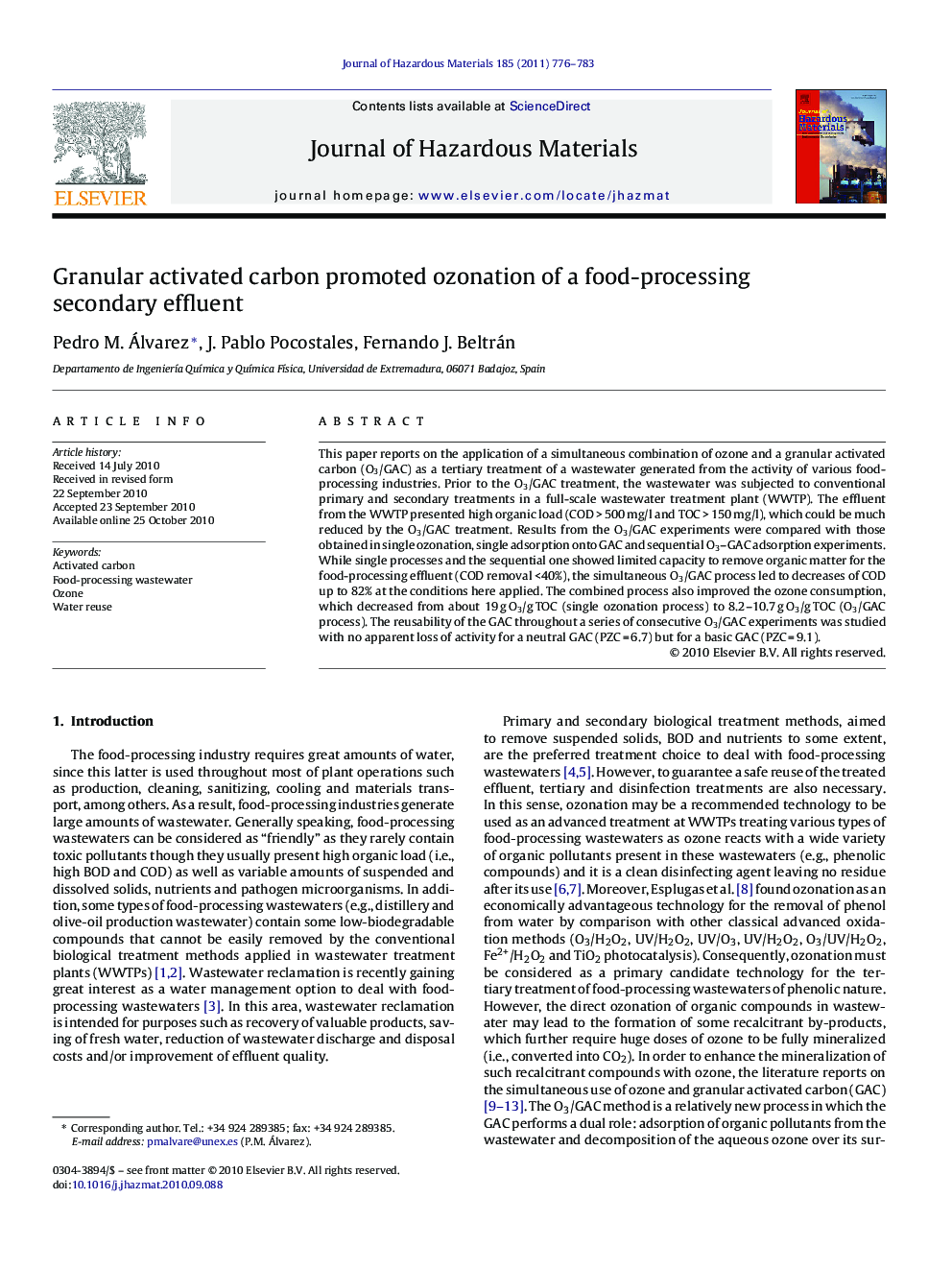| Article ID | Journal | Published Year | Pages | File Type |
|---|---|---|---|---|
| 579855 | Journal of Hazardous Materials | 2011 | 8 Pages |
Abstract
This paper reports on the application of a simultaneous combination of ozone and a granular activated carbon (O3/GAC) as a tertiary treatment of a wastewater generated from the activity of various food-processing industries. Prior to the O3/GAC treatment, the wastewater was subjected to conventional primary and secondary treatments in a full-scale wastewater treatment plant (WWTP). The effluent from the WWTP presented high organic load (COD > 500 mg/l and TOC > 150 mg/l), which could be much reduced by the O3/GAC treatment. Results from the O3/GAC experiments were compared with those obtained in single ozonation, single adsorption onto GAC and sequential O3-GAC adsorption experiments. While single processes and the sequential one showed limited capacity to remove organic matter for the food-processing effluent (COD removal <40%), the simultaneous O3/GAC process led to decreases of COD up to 82% at the conditions here applied. The combined process also improved the ozone consumption, which decreased from about 19 g O3/g TOC (single ozonation process) to 8.2-10.7 g O3/g TOC (O3/GAC process). The reusability of the GAC throughout a series of consecutive O3/GAC experiments was studied with no apparent loss of activity for a neutral GAC (PZC = 6.7) but for a basic GAC (PZC = 9.1).
Keywords
Related Topics
Physical Sciences and Engineering
Chemical Engineering
Chemical Health and Safety
Authors
Pedro M. Álvarez, J. Pablo Pocostales, Fernando J. Beltrán,
